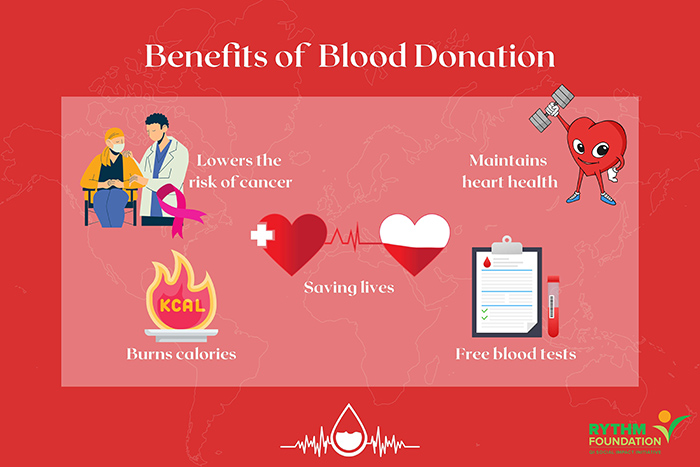Every two seconds, someone in the world needs blood, but health systems struggle with shortages due to a lack of regular donors. On June 14, World Blood Donor Day raises awareness about the importance of donations and honours volunteers whose selflessness saves lives.
Donating blood costs nothing, yet it can mean everything to someone in need. Understanding the benefits of blood donation for both recipients and donors is a great way to get involved.
Here are some essential facts about blood donation to inspire, inform, and encourage you to make a difference:
1. Your blood can be used in more ways than you expect
While most people assume that blood is only helpful in surgeries and trauma, many other patients require blood, such as cancer patients, burn victims, transplant patients and those with blood loss, anaemia, and other blood disorders.
2. Every drop of blood that you donate can help save a life in some way
Human blood has four main components: red blood cells, white blood cells, platelets and plasma, and each element is essential to the human body’s function. Check out the infographic below to learn more about the four types of blood donation – whole blood donation, red cell donation, plasma donation, and platelet donation.

3. Your blood forms new cells to replace what you donate
Each pint of blood donated—roughly 470ml—makes up about 8% to 13% of an average adult’s total blood volume. One of the remarkable abilities of the human body is how quickly it restores this loss. The human body can replace this volume within 24 to 48 hours and replenishes the red blood cells, and iron lost in 10 to 12 weeks.
Knowing this, how often can you donate blood? The Red Cross recommends the following donation frequencies based on the different types of blood donation:
- Whole blood donation: Every 56 days, up to 6 times a year
- Power red donation: Every 112 days, up to 3 times a year
- Platelet donation: Every 7 days, up to 24 times a year
- AB Elite plasma donation: Every 28 days, up to 13 times a year
4. There is never enough blood
About one in seven people entering a hospital need blood; the short lifespan of blood collected means a constant blood donation supply is necessary. Red blood cells have a shelf life of up to 42 days, while platelets have a shorter shelf life of five to seven days.
5. Donating blood is as easy as 4 simple steps
First, a nurse will review your medical history, followed by a physical exam to confirm you’re fit to donate. Once cleared, the nurse will insert a sterile needle into your arm to start the donation. After the process, you’ll enjoy some snacks to boost your energy and keep you feeling your best.

6. You could be a speciality donor
Speciality donors provide blood for specific recipients and are often in high demand. AB-negative donors have the rarest blood type, with plasma that can be used for any patient. O-negative donors, also rare, are universal red-cell donors, supplying the most in-demand blood type for emergencies when a patient’s blood type is unknown.
7. Beyond patients, the benefits of blood donation extend to donors, too.
Though blood donation isn’t a weight loss trend, it can burn up to 650 calories per pint and offers health benefits like improved heart health and reduced cancer risk.
Donors also receive free blood screenings, as all donations undergo strict testing. In countries like Malaysia, regular donors enjoy added perks, including free health screenings, Hepatitis B vaccines, and outpatient care.
Of course, no perk is more important than the possibility of helping to save a life, and in case you didn’t know, one pint of blood can save up to three lives.
8. There is no substitute for human blood
Despite the progress of the modern world that has paved the way for medical marvels like artificial hearts and other synthetic organs, nothing has come close to replacing human blood. We’re unsure what will if that doesn’t tell you how crucial human blood is!
Donating blood is an act of solidarity. So, let’s join the effort and help save as many lives as possible.






